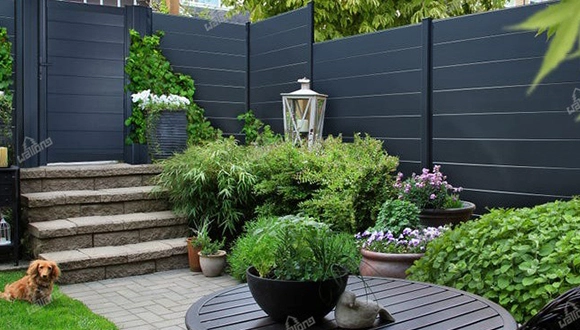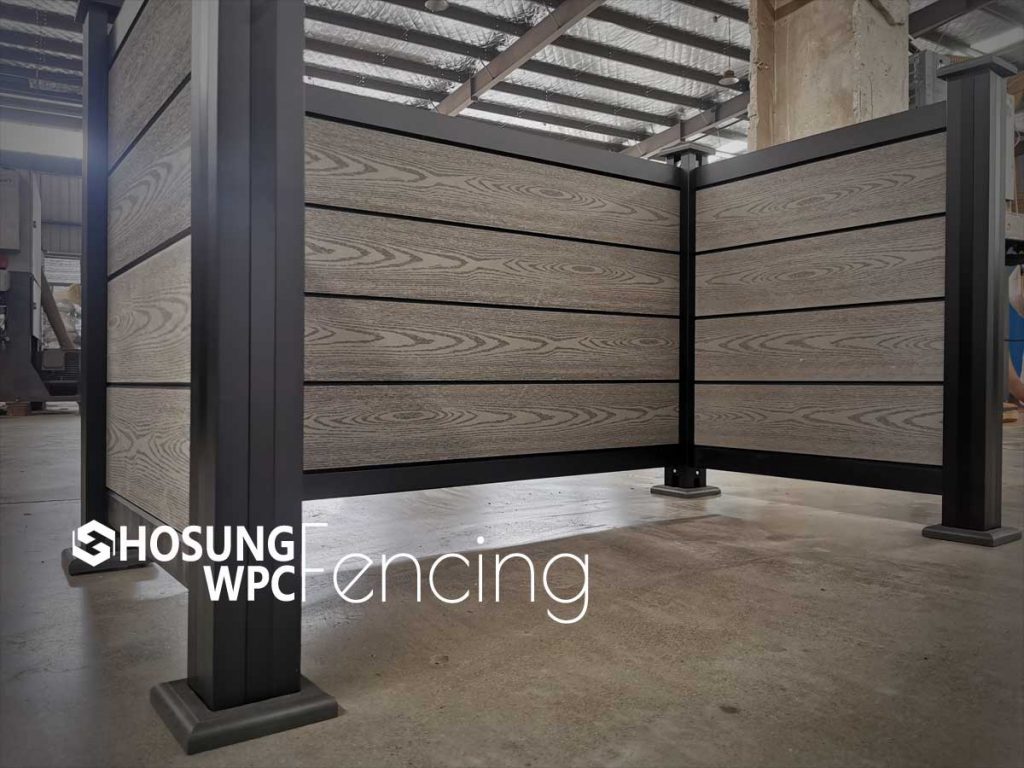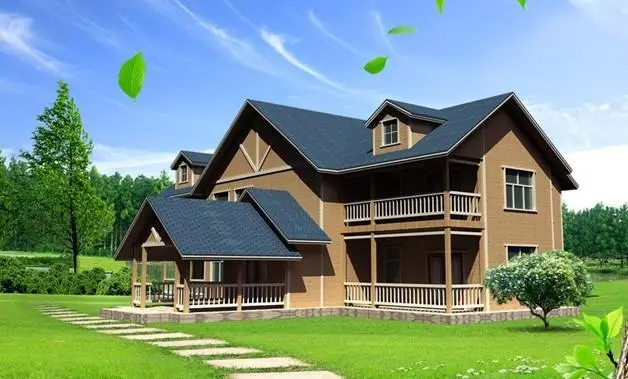If you are planning to design your outdoor space, fencing is more than just a boundary — it’s a statement of style, security, and durability. Among the many fencing options available today, black composite privacy fencing has emerged as one of the most popular choices for homeowners and property developers alike. It offers a perfect combination of modern elegance, long-lasting performance, and low maintenance — all while providing excellent privacy. In this article, we’ll explore everything you need to know about black composite privacy fencing: why it’s so popular, why black is a smart color choice, and what factors to consider when choosing the perfect black composite fence for your property.
Table of Contents
What Is Black Composite Privacy Fencing?
Before diving into the benefits of the color black, let’s understand what composite privacy fencing actually is.
Composite fencing is made from a mixture of wood fibers and recycled plastic, combining the natural look of wood with the durability of synthetic materials. The result is a fence that resists rotting, warping, fading, and insect damage far better than traditional timber fencing.
When produced in black, this fencing takes on a sleek and contemporary look that fits perfectly in modern landscapes, urban backyards, and commercial spaces.
Key characteristics of black composite privacy fencing include:
High strength and rigidity
Excellent UV and weather resistance
Minimal maintenance requirements
Smooth, modern surface finishes
Non-toxic and eco-friendly materials
This combination makes it a go-to option for homeowners who value aesthetics and long-term performance equally.
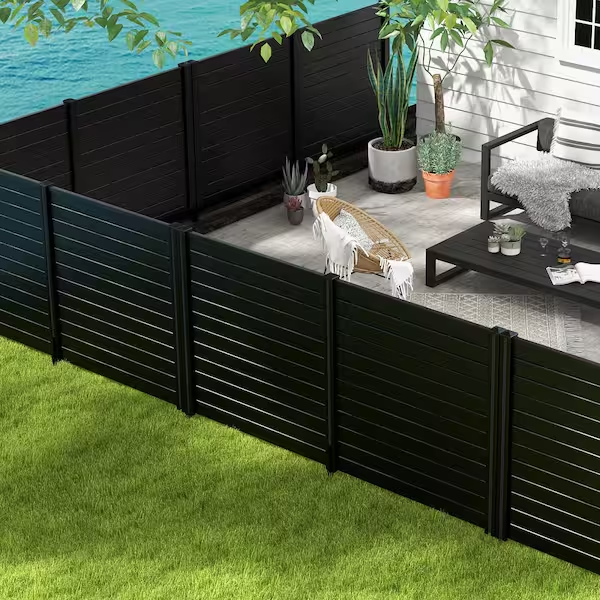
Why Choose Black for Composite Privacy Fencing
Color plays a huge role in outdoor design, influencing not only the appearance but also the mood and harmony of a space. So why do so many people choose black composite fencing?
Let’s break it down into several important reasons:
(1) Modern and Minimalist Aesthetic
Black has always been associated with elegance, sophistication, and timeless style. In architectural design, black is often used to create contrast, highlight textures, and give outdoor spaces a clean, minimalist appeal.
A black composite privacy fence:
Complements both contemporary and traditional house designs
Pairs beautifully with light-colored walls, stone paths, or wooden decks
Creates a dramatic backdrop for plants, flowers, and garden decor
Whether you have a sleek modern villa or a rustic country home, a black fence blends effortlessly while enhancing the overall look.
(2) Strong Privacy and Visual Depth
Unlike lighter-colored fences, black composite panels offer superior visual privacy. The darker shade reduces reflection and makes it harder for outsiders to see through small gaps, ensuring your outdoor area remains truly secluded.
From a design standpoint, black creates an illusion of depth, making your yard appear larger and more layered. This visual trick works especially well in compact urban spaces or narrow gardens.
(3) Low Maintenance and Less Noticeable Dirt
Dirt, dust, and water stains show up prominently on white or light-colored fences. Black composite fencing, however, naturally hides smudges, grime, and weathering marks far better.
Because composite materials are non-porous, rainwater easily washes away most surface dust. Occasional cleaning with water and mild soap is enough to keep it looking new.
For homeowners who want beauty without constant upkeep, black composite fencing is a practical and time-saving option.
(4) Heat Absorption and Color Stability
Many people wonder: “Won’t a black fence get too hot?”
In direct sunlight, darker colors do absorb more heat than lighter ones — but modern composite materials are designed with UV-resistant pigments and thermal-stable polymers that prevent excessive fading or warping.
Unlike painted wood, black composite fencing maintains its color consistency even after years of sun exposure. Manufacturers often test the color stability using artificial weathering to ensure it can endure various climates, from intense sun to heavy rain.
So, while it may get slightly warmer to the touch, it won’t compromise durability or appearance.
(5) Contrasting Power for Landscaping
Black is a neutral anchor color that makes everything around it pop. Whether you have bright green hedges, colorful flowers, or grey stone paving, black fencing helps frame the landscape beautifully — just like a picture frame around a piece of art.
This is one reason landscape designers frequently recommend black fencing: it enhances the surrounding colors and gives your garden a sense of depth, structure, and visual balance.
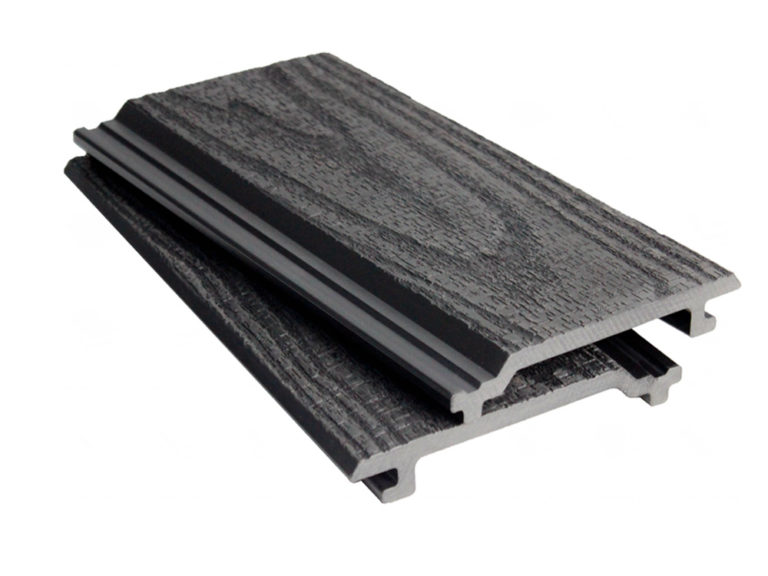
Advantages of Composite Material Itself
Beyond the color choice, the material composition is another reason to choose black composite privacy fencing over traditional wood or metal options.
Here’s what makes composite fencing such a strong contender:
(1) Exceptional Durability
Composite materials are built to last. They resist:
Rot and mold, unlike untreated wood
Rust and corrosion, unlike metal fencing
Warping, cracking, and splintering, even in extreme temperatures
Most composite fences can easily last 20 years or more with minimal care, making them a solid long-term investment.
(2) Low Maintenance
Forget about sanding, staining, or repainting every few years. Composite fencing only requires:
Occasional rinsing with water
Gentle cleaning using mild detergent
No need for sealants or chemical treatments
This makes it an ideal option for busy homeowners who still want an elegant, well-kept outdoor space.
(3) Eco-Friendly Choice
Most composite fencing products are made from recycled wood fibers and reclaimed plastics, helping reduce waste and deforestation. If sustainability matters to you, choosing composite fencing — especially from a manufacturer that uses eco-conscious production — is a responsible decision.
(4) Long-Term Cost Efficiency
While composite fencing might cost more upfront than wood, the lifetime cost is significantly lower. You save on:
Maintenance materials (paint, sealant)
Labor for repairs and repainting
Replacement costs due to rotting or warping
Over time, it pays for itself through durability and convenience.
(5) Consistent Appearance
Each composite fence board is manufactured with precise color and texture consistency. Unlike natural wood — which can vary in grain, color, and pattern — composite fences maintain a uniform, polished look from one panel to the next.
This consistency is especially appealing in large installations, where visual uniformity makes a big difference.
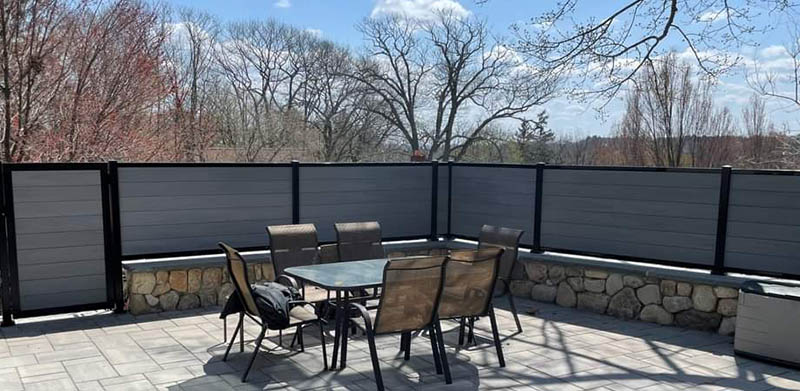
Factors to Consider When Choosing Black Composite Privacy Fencing
Before purchasing or installing your fence, it’s important to evaluate several practical aspects. Here are the main factors to consider when choosing the right black composite privacy fencing for your space.
(1) Color Shade and Finish
Not all black fences are the same. Some composite panels come in deep matte black, while others may lean towards charcoal grey, graphite, or anthracite tones.
Consider:
Matte finishes for a modern, non-reflective appearance
Slightly textured finishes to mimic natural wood grain
Glossy finishes if you prefer a more polished, contemporary feel
When possible, view color samples in natural daylight to see how they interact with your home’s exterior.
(2) Fence Height and Design
Privacy fencing typically ranges from 1.8 to 2.1 meters (6–7 feet) in height. Check your local zoning regulations for height limits before installation.
Design options include:
Full-privacy panels (solid boards)
Semi-privacy fences with horizontal slats
Decorative tops such as lattice or aluminum accents
Think about whether you want complete seclusion or a fence that still allows light and airflow.
(3) Post and Frame Material
Composite panels are often supported by:
Aluminum posts, for corrosion resistance
Galvanized steel, for high structural strength
Composite posts, for full visual uniformity
Each option has its own benefits, so consider durability, color match, and cost when choosing your frame.
(4) Installation Method
Most modern composite fencing systems use interlocking boards or tongue-and-groove designs for easy installation. This ensures a clean look without visible screws.
You can either:
DIY installation using preassembled kits, or
Hire professional installers for large or sloped areas.
Make sure the ground is properly leveled and drainage is adequate to prevent long-term issues.
(5) Climate and Location
If you live in an area with extreme sunlight, frequent rain, or heavy winds, choose fencing panels that come with:
UV inhibitors for color stability
Water-resistant cores
Strong interlocking systems for wind resistance
Composite fencing is generally designed for all climates, but checking product specifications ensures the best performance in your region.
(6) Brand Reputation and Warranty
Not all composite fences are created equal. When choosing a brand or supplier, look for:
Proven track record and customer reviews
Clear warranty terms (usually 10–25 years)
Certifications for UV resistance and recycled content
A reliable manufacturer ensures not only product quality but also long-term service support.
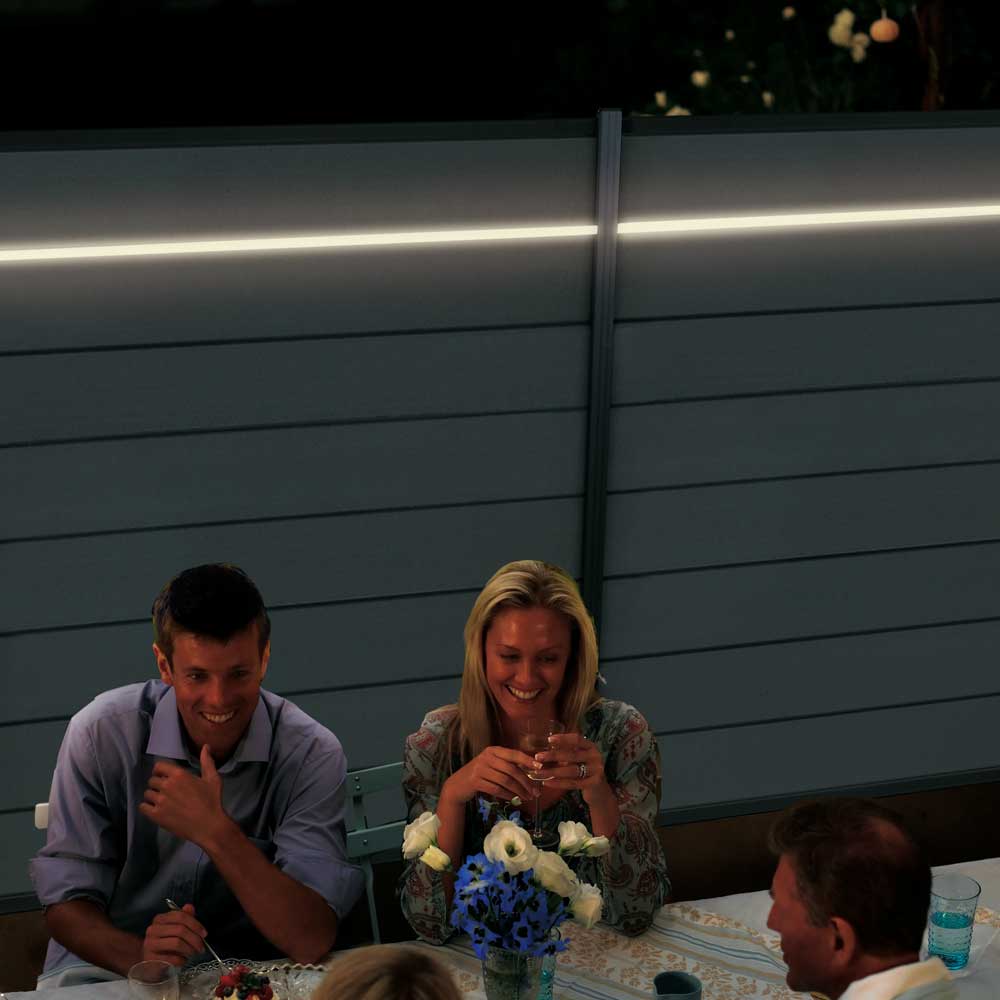
Design Ideas Using Black Composite Privacy Fencing
If you’re still wondering how black fencing might fit into your outdoor design, here are a few inspiring ideas:
(1) Modern Minimalist Backyard
Combine black composite privacy fencing with light-colored decking (like beige or grey WPC boards). Add minimalist outdoor furniture and potted plants for a balanced, clean aesthetic.
(2) Garden Contrast Design
Use black fencing as a backdrop for lush greenery and colorful flowers. The dark panels make the plants stand out, giving your garden a dramatic, high-end appearance.
(3) Poolside Privacy
Install black composite fencing around your swimming pool for privacy and style. The water’s blue color will beautifully contrast with the fence, while the composite’s moisture resistance ensures longevity.
(4) Urban Courtyard Look
For city homes with limited outdoor space, black fencing can create a sleek, private oasis. Pair it with vertical gardens, lighting strips, and metal accents for a contemporary touch.
(5) Commercial or Office Space
Businesses can use black composite fences to create clean, professional boundaries that also match modern architectural facades — ideal for restaurants, offices, and hotels with outdoor areas.
Maintenance Tips for Black Composite Fencing
To keep your black composite fence looking great for years, follow these simple care tips:
Rinse Regularly: Use a garden hose to remove dust and pollen every few weeks.
Clean with Mild Soap: For tougher stains, use warm water and mild detergent with a soft brush.
Avoid Harsh Chemicals: Never use bleach or solvent-based cleaners, as they may damage the surface.
Trim Nearby Plants: Keep vegetation from growing directly against the fence to prevent scratches.
Inspect Annually: Check for loose fasteners or panels once a year to maintain structural integrity.
With minimal effort, your fence will maintain its deep black color and smooth finish for decades.
Conclusion: Why Black Composite Privacy Fencing Is Worth It
Choosing black composite privacy fencing is more than a design decision — it’s a lifestyle upgrade. It offers:
A stylish, timeless appearance
Long-lasting performance against weather and aging
Low maintenance, saving time and cost
Superior privacy and security
Eco-friendly benefits through sustainable materials
Black composite fencing strikes the ideal balance between beauty and practicality. It complements nearly any landscape, requires almost no maintenance, and keeps its rich color for years to come.
Whether you’re redesigning your backyard, upgrading your perimeter fence, or adding modern touches to a commercial property, black composite privacy fencing is a smart and lasting investment that adds both style and value to your space.
Contact Hosung WPC for more about these composite fencing with wholesale price!

